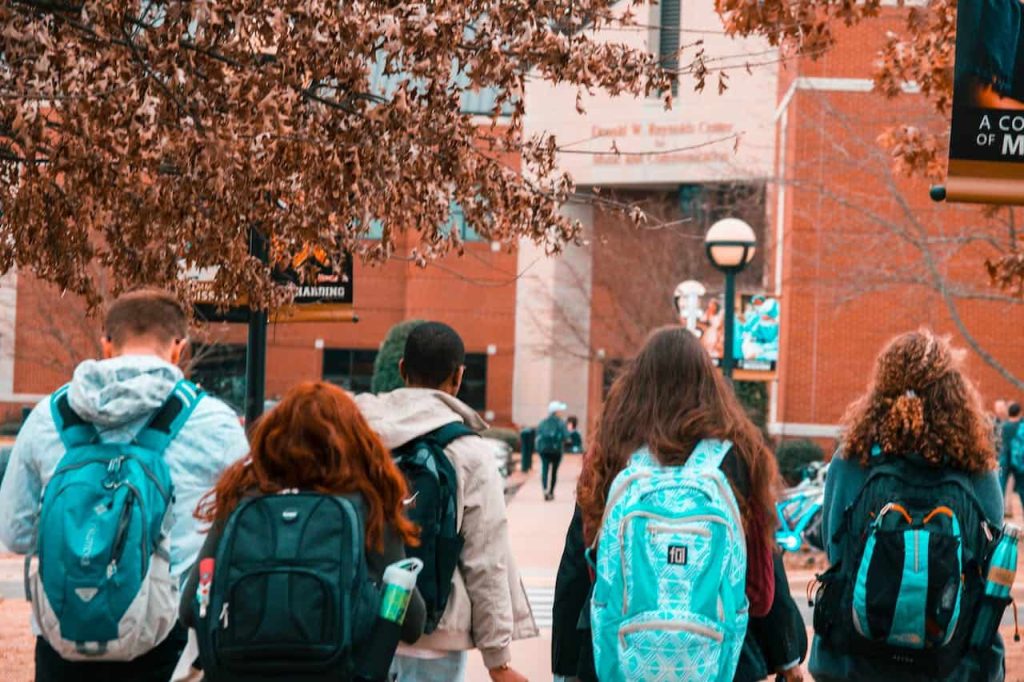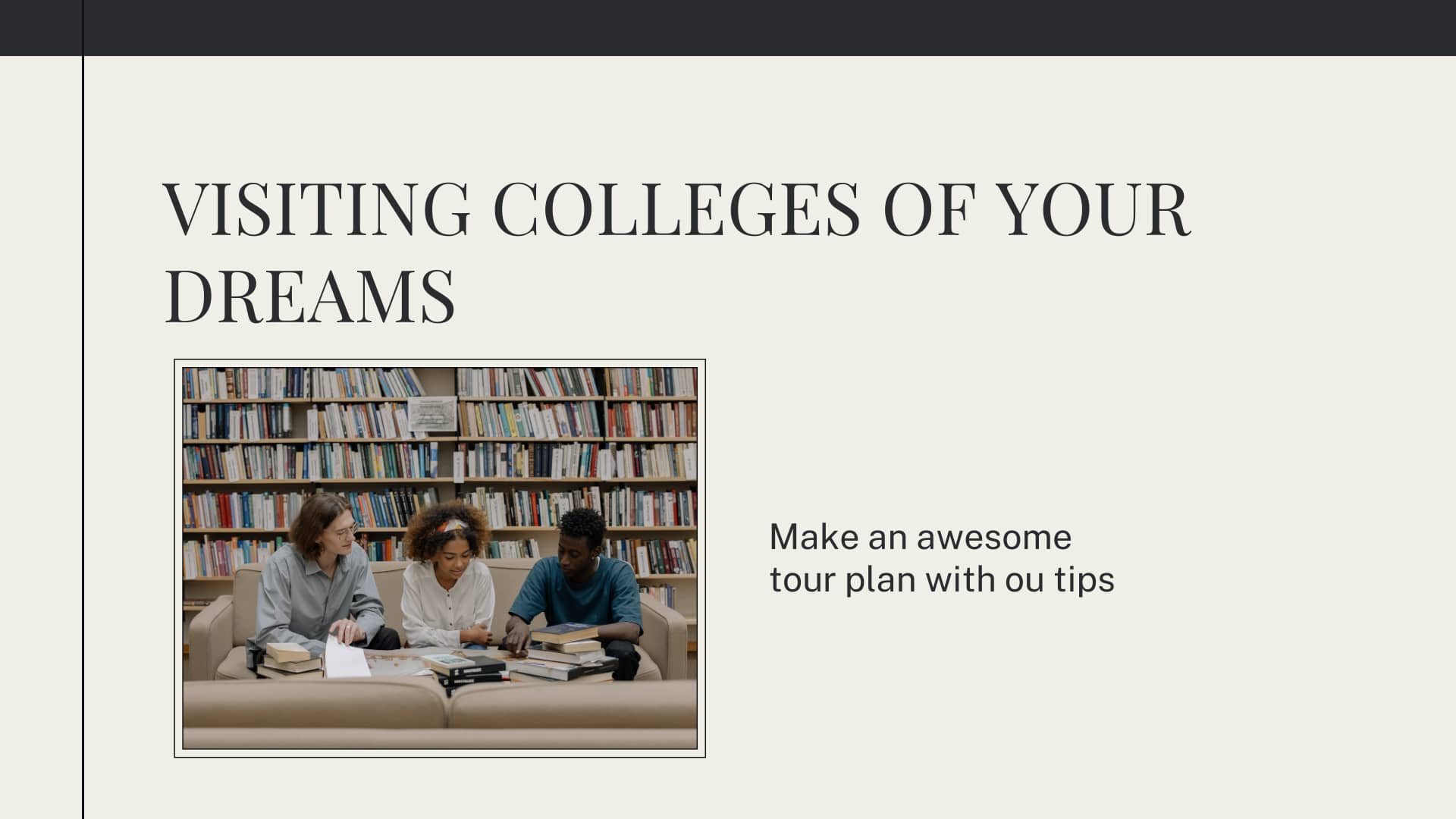As I’ve talked with students about their college admissions experiences, one theme has consistently come up. Seniors talk about how they wish they had gotten a better feel for the schools before applying to them.
Now they are at the stage where they must choose among schools, without knowing what it is really like to be a student there.
Juniors say they don’t know which colleges to explore. Their counselors have given them a list, but it doesn’t seem to fit them well, or it doesn’t seem broad enough to give them choices.
Parents tell me that they are reliant on other parents with older students to tell them what schools they should visit with their kids, or on a simple list their student brings home after a cursory meeting with a guidance counselor.
So what is the issue here? There needs to be a proper plan.
What to Do Before Visiting Those Colleges?
A properly designed college tour can help high school students get a feel for their range of options. It can also help to reshape “the list” to add some subjectivity to the more objective, impersonal criteria that go into the original “target schools.”
Finally, if coupled with some targeted overnight visits, the tour can help high school students understand what it is really like to be a college student in different environments.
Designing the proper college tour is a difficult task, complicated by the fact that not everyone can get into every school.
Nevertheless, most students should at least take a look at some schools that are more competitive, just as they should try to experience other great schools that have slightly less demanding admissions standards. Just because a school is highly selective doesn’t necessarily mean it is the right school for every potential applicant.
Let’s move forward to the guide.
Creating the Tour
There are thousands of good colleges and universities in this country. How do I narrow it down, you may be asking? Every student and his or her family have certain limiting factors that help to narrow down the list a bit.
You might want to re-examine these factors to make sure they are legitimate, however, as current limitations will have an impact on which options are open to the student down the road.
Then again, as some doors close, others will open.
Tips to Create a College Tour
Here are some general criteria that some families may be able to use to cut down their college tour to size:
• Location – Are there regions you definitely want to include? Are there others you definitely want to avoid? Do you prefer a big city? A small city? A college town? How far away from home will you accept?
• Finances – How much are you willing to spend? How much in loans are you willing to incur?
• Size – Is a big school out of the question? Is a medium-sized school a good fit? Will a small school be more supportive?
• Academics – Are “party schools” desirable or verboten? Do you want a school where there is peer pressure to be in the library? Do you want to be surrounded by the masses, with a small intellectual group, or be in a place where everybody is an academic all-star? Are you interested in certain majors, and would you prefer a school where everything is good or one where your major is good?
• Social – Is it important to be in a place where people stay on campus during weekends? Do you want to go Greek? Should Greeks dominate or be a small subset of the student body? Are sports important to you—both to play and to watch?
If you, the student, can answer at least some of these questions, crafting a good college tour will be much easier. But many times, it is very hard for kids to answer these questions. They honestly don’t know.
For parents, finances may weigh on their mind more heavily, but sometimes that isn’t a consideration either. And even if they can answer the above questions, some families don’t know which colleges fit their criteria.
This is the approach I would recommend. Before designing and going off on a grand tour, high school students should be shown a range of options within their immediate neighborhood to apply to. If possible, they should get the chance to spend the night with a current student at some of those schools.
If the student can’t spend the night, make sure you find a way to sit and talk with real students. The “official tour” put on by the admissions office is interesting, but you’re going to get a whitewashed perspective. You’ve got to talk to the students.
What Questions to Ask?
Pick up a student newspaper. Notice what flyers are up on the walls.
- How active do the students look?
- How happy?
Talk to them about their experiences registering for classes, about the size of classes.
- Ask them how much they study every week (and remember that even at the same school these answers will differ).
- Ask them if people party a lot.
- Where do they hang out?
- Do people go home on weekends or stick around?
- If you spend the night, try to meet a lot of people—ask your host if you can go out to dinner with him or her and friends.
- Is the library full at night, by the way?
After these visits, ask the above questions again, and some answers should start to appear.
So, Now What?

Ready for the long, boring, but the most important part of this read? How to select the universities by visiting them during your college tour? Okay, let’s figure this out.
Questions, questions, questions….aha! Remembered!
1
For example, if you live in Chicago, there are some fantastic options within a short drive. To get a feel for a good small liberal arts college, try Beloit College, 90 miles away just inside Wisconsin. Check out Depaul for the urban (Catholic) campus.
Northwestern is more selective and just outside the city, and the University of Chicago is similarly selective and on the south side in Hyde Park. The University of Illinois is a great example of the large school in a college town.
For a medium-sized school in a smaller city, try Marquette in Milwaukee. And Notre Dame is a good choice to try out a medium-sized Catholic school, with a lot of school spirit, in a college town. Illinois Institute of Technology can give you a chance to see what a more tech-oriented school might offer. What would you learn from these close-by visits?
2
If you like Beloit, then you might like to see Grinnell and Cornell College in Iowa, Knox College in Galesburg, IL, Kalamazoo College in Michigan, DePauw and Wabash in Indiana, Carleton and Gustavus Adolphus in Minnesota, and Lawrence University in Wisconsin, among others.
Or maybe you’d like to go to the East Coast and check out Bucknell and Lafayette in Pennsylvania; Bates in Maine; Sarah Lawrence, Hamilton, Bard, and Union College in New York; Holy Cross in Massachusetts; and St. Anselm in New Hampshire.
If you have the grades, you’d check out Williams, Amherst, Swarthmore, Bowdoin, Middlebury, and Wesleyan. If you like the idea of being in the sunny southeast, there’s Davidson, Furman, Rollins, Stetson, Hampden-Sydney, Agnes Scott, etc.
3
If you liked the feel of DePaul—the medium-sized urban campus, you should check out St. Louis University, George Washington, Boston University, the University of Denver, and Fordham.
If you have the credentials and grades, of course, and like Northwestern, look at Vanderbilt, Washington University, Rice, Emory, Duke, Georgetown, USC, and Stanford. If you liked the feel of the U. of Chicago, try NYU, Yale, Carnegie-Mellon, Johns Hopkins, MIT, and Tufts.
4
If you think you have a chance to get in to either Northwestern or Chicago, you might want to take a trip up the East Coast and see the traditionally elite schools: start at the University of Pennsylvania, stop at Princeton on your way to New York.
Visit NYU and Columbia in New York, then head to New Haven to see Yale. Stop at Wesleyan in Middletown, CT, and then head to Providence to see Brown. From Brown, drive out to Western Massachusetts to Amherst, for a stop at Amherst College.
Then on to Williamstown and Williams College, and up to New Hampshire to see Dartmouth. Drive east to Maine to Bates and Bowdoin before backtracking to Boston, for your final stop, Harvard.
5
A similarly elite West Coast trip would include Stanford, University of California-Berkeley, UCLA, Cal Tech, and the Claremont Colleges (Pomona, Harvey Mudd), near LA.
6
A slightly less ambitious East Coast trip might include Duke, North Carolina, Wake Forest, U. of Virginia, Georgetown, George Washington, LeHigh, Colgate, Bucknell, Fordham, Providence College, Boston College, Tufts, and the University of Rochester.
7
If you liked the University of Illinois, you can craft trips in any direction, encompassing any range of selectivity. In the Midwest, in declining order of selectivity, you have the University of Michigan (followed shortly by Illinois), Wisconsin, Michigan State, Kansas, Ohio State, Miami of Ohio, University of Minnesota, Purdue, Nebraska, Colorado, Indiana, and Iowa. And many more.
Try a few more of these and see what you like. In the south, you’d look at U. of Texas, Texas A&M, Ole Miss, Auburn, Alabama, Tennessee, Florida, Florida State, U. of Miami, North Carolina, Kentucky, and Arkansas, to name a few. All of these schools have a lot in common—they’re big, they’ve got innumerable academic and social opportunities, but at the same time, it is easy to get lost in the crowd. And each school has a unique culture and unique traditions.
8
The same lists can be created for Notre Dame (try USC, Boston College, William & Mary, Holy Cross, Providence College, Pepperdine, Miami of Ohio) or Illinois Tech (try Carnegie-Mellon, MIT, Cal Tech, Harvey Mudd, Renssaeler Polytechnic, Georgia Tech, and even Iowa State, U. of Missouri-Rolla, Illinois, Michigan—a lot of state schools have fantastic engineering departments).
Extra Help
This is actually an area where college admission consultants have a lot of experience. They can sit and talk with our clients about their particular interests and goals and can help create the perfect college tour, as well as suggest some one-time overnights.
If you plan to work with your high school guidance counselor on this plan, challenge them—challenge the list. Just because everyone else at X High School is going to see Y College, so what? It may make it harder for you to get in, and there may be many schools out there that just make more sense.
For those of you who are attending universities, grad school admissions consultant can also be a great option to start with.
Conclusion
Wrapping up our guide on crafting the perfect college tour, remember that each campus visit is a unique opportunity to uncover the true essence of your potential academic home.
Think of these tours not just as mere visits, but as pivotal moments where futures are shaped and decisions are crystallized. So, step onto each campus with an open mind and a keen eye, ready to absorb every detail.
This is where your tomorrow begins – choose wisely, choose boldly.

